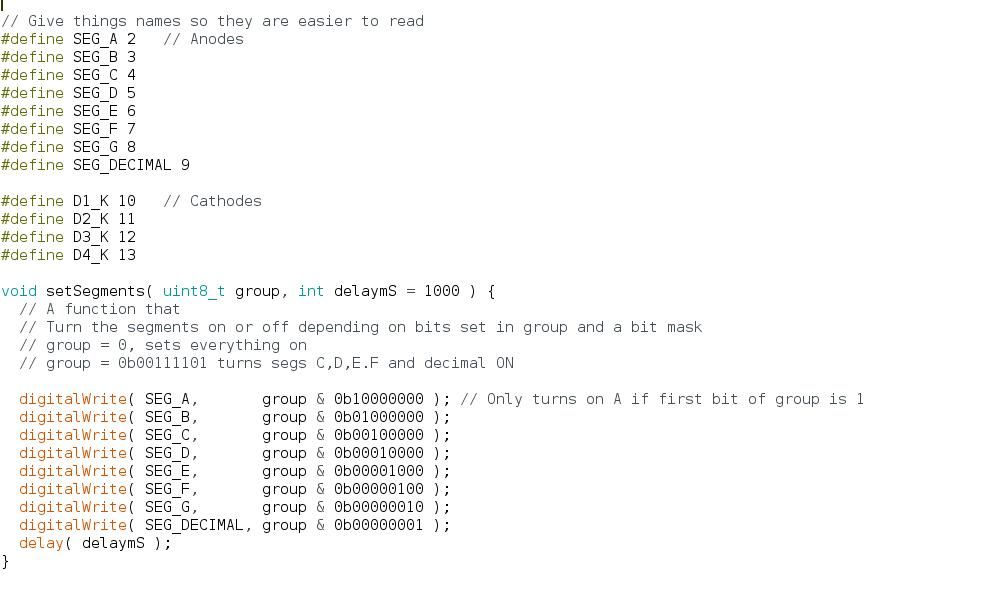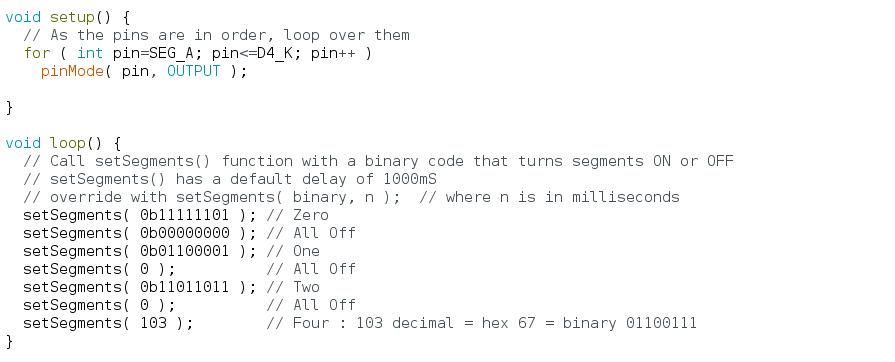from the time on this posting you can tell it might be insomniac ramblings:
A somewhat more understandable way of doing what SOD suggests would be to define a set of one dimensional arrays
//int Ch_n[] = {a, b, c, d, e, f, g, dp}
int Ch_0[] = {1, 1, 1, 1, 1, 1, 0, 0};
int CH_1[] = {0, 1, 1, 0, 0, 0, 0, 0};
and so on to
int CH_dp[] = {0, 0, 0, 0, 0, 0, 0, 1};
int Ch_clear[] = {0, 0, 0, 0, 0 , 0, 0, 0}
and then
void setSegments(int Ch_n)
{
digitalWrite(seg_A, Ch_n[0];
digitalWrite(seg_B, Ch_n[1];
and so on to
digitalWrite(seg_dp, Ch_n[7];
and then in loop() call
setSegments(Ch_0);
or whichever you want to send
don't forget you can also display A, b, C, d, E, F, H, J, L, S (same as 5), Y
No doubt SOD will put this right if I've erred.
Edited By duncan webster on 27/11/2020 03:51:40
Edited By duncan webster on 27/11/2020 03:52:33
Edited By duncan webster on 27/11/2020 03:55:12
Edited By duncan webster on 27/11/2020 03:55:46
Edited By duncan webster on 27/11/2020 03:56:13
Alan Charleston.






